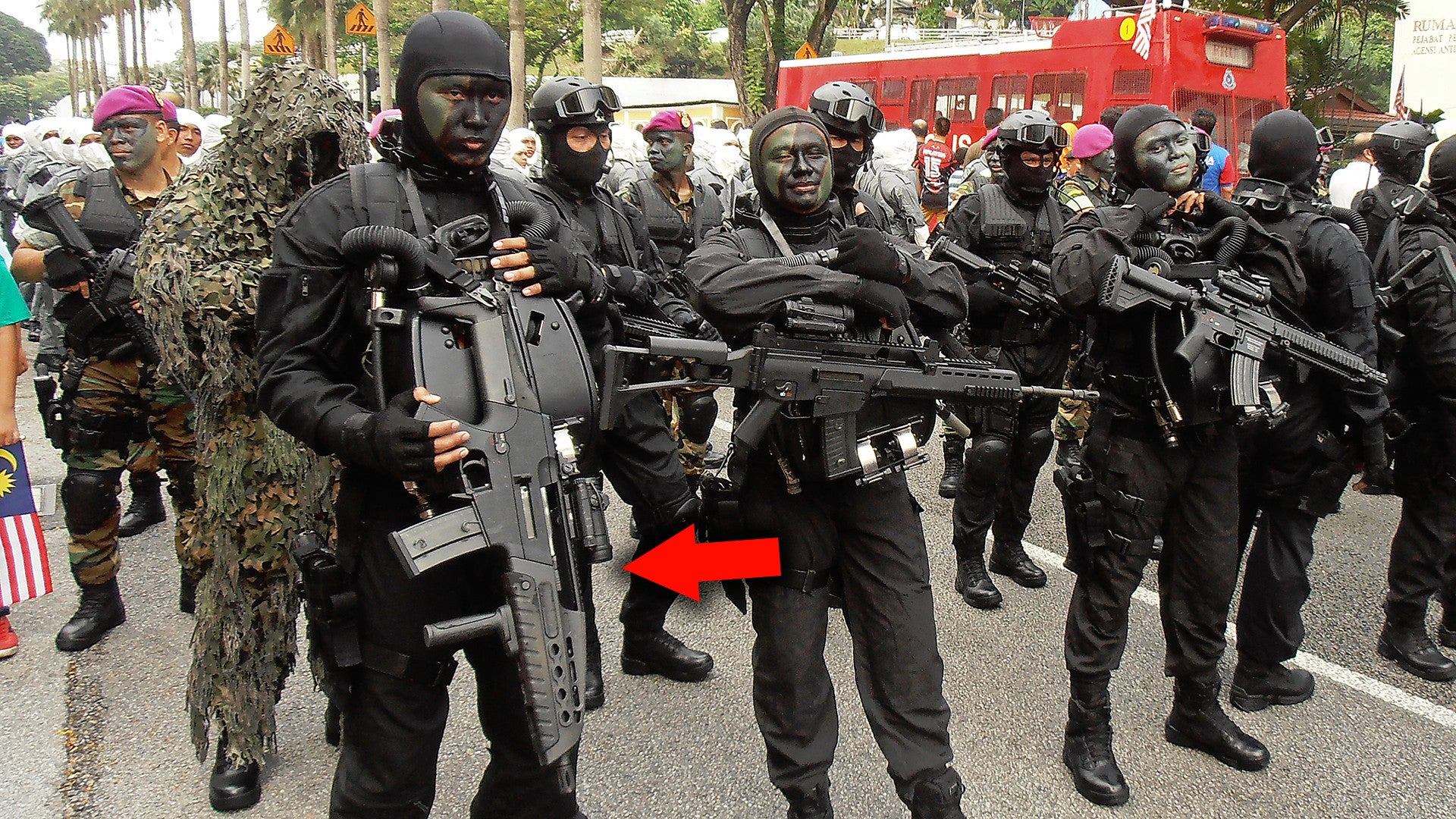Very often, the decision by a country with a large, professional military, such as the United States, to adopt some new type of weapon or other military equipment leads to sales of those systems, or variants thereof, to other nations. Systems that do not have this kind of official stamp of approval or, worse, get rejected by the original intended customer, are often doomed to failure on the international market. Still, there are occasions where another country will see what is otherwise a failed project and give it a new lease on life. This is exactly what happened with the curious case of a Malaysian naval special operations unit fielding variants of the Heckler and Koch XM8, a much-touted family of 5.56mm small arms that the U.S. Army had abandoned as potential replacements for various weapons, including its M16 rifles and M4 carbines.
The Royal Malaysian Navy’s Pasukan Khas Laut, which translates to English as Naval Special Warfare Forces and is more commonly abbreviated PASKAL, first began using the XM8 series around 2010, five years after the Army officially suspended the project. Pictures are available online showing PASKAL operators carrying rifle and carbine variants, as well as examples of the especially rare personal defense weapon (PDW) configuration.

PASKAL is roughly analogous to the U.S. Navy SEALs and routinely trains with that American unit, as well as other U.S. and international special operations forces. It traces its history the Royal Malaysian Navy’s decision to create a Naval Commando Unit within its Security Regiment Organization in 1977. This element officially became the country’s Naval Special Warfare Forces in 1981.
The unit trains to carry out various typical maritime special operations missions, such as raiding ships and boats and conducting long-range reconnaissance missions in coastal environments. However, its personnel also train to perform a host of unconventional warfare activities behind enemy lines or for internal defense, such as training counter-guerrilla forces, more in line with the traditional mission set of U.S. Army Special Forces units. PASKAL is also on call to conduct various internal security and counter-terrorism operations at sea and on land.
It not clear how or why PASKAL acquired the XM8s. The purchase appears to have been part of a larger shopping spree with Heckler and Koch, which also included orders for 5.56mm G36 and HK 416 rifles, 7.62mm HK 417 rifles, .45 caliber UMP submachine guns, and 4.7mm MP7 personal defense weapons. It’s unclear if Heckler and Koch ever made any XM8s for any other purpose beyond the approximately 200 it made for U.S. trials. So, it’s possible that these guns were either leftover from those tests or were assembled from the remaining parts that the company had made to support those efforts.
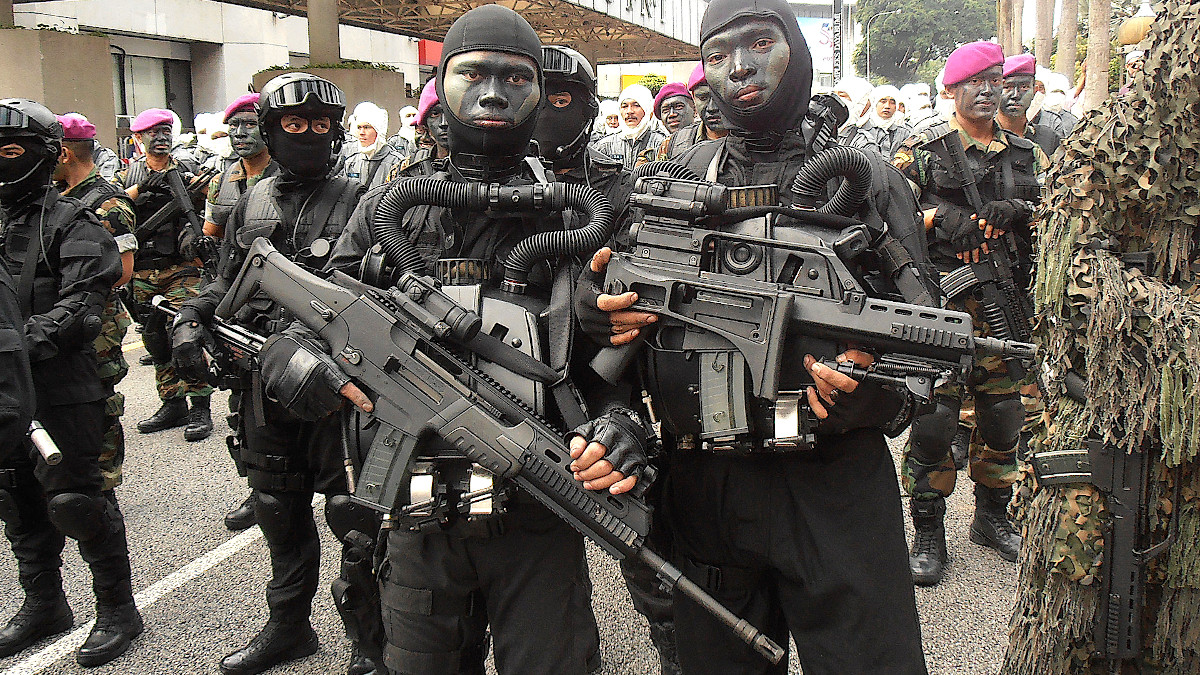
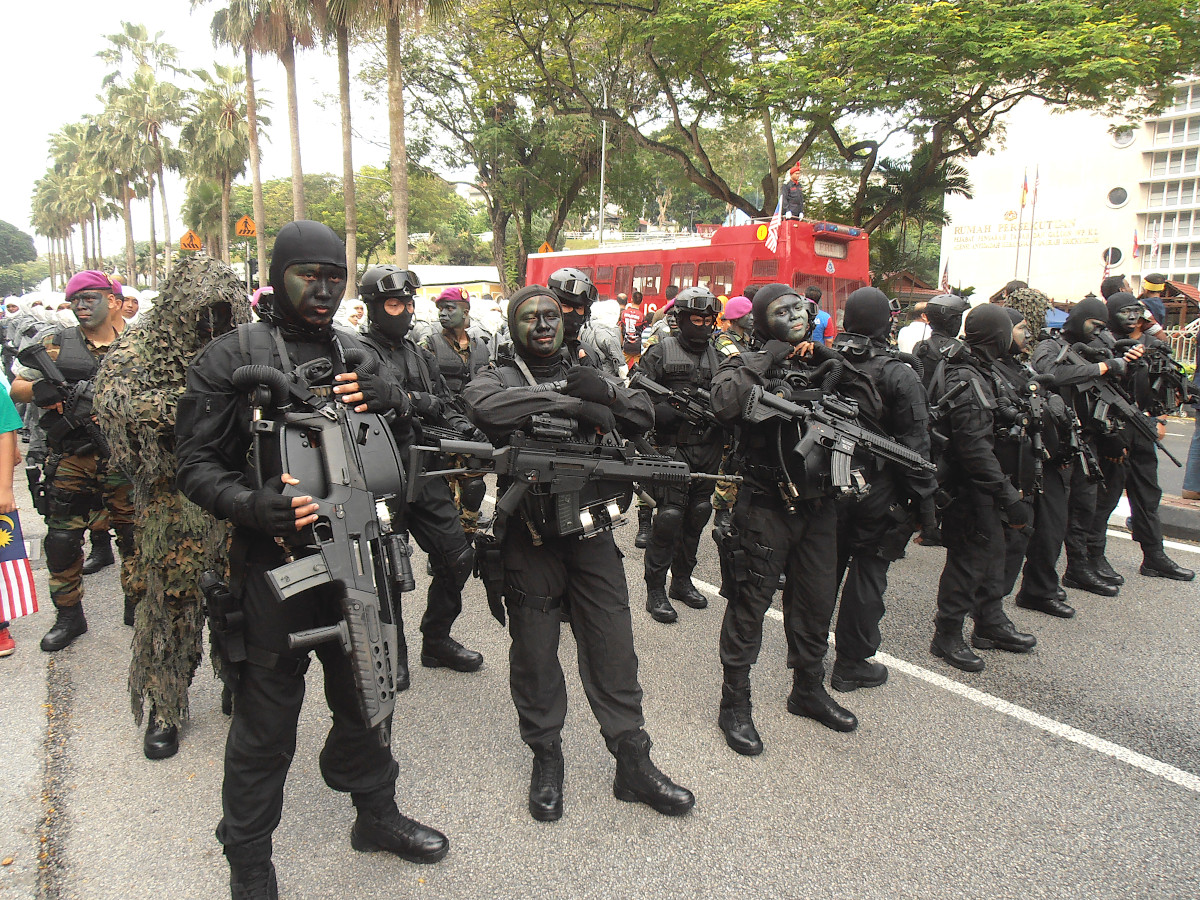
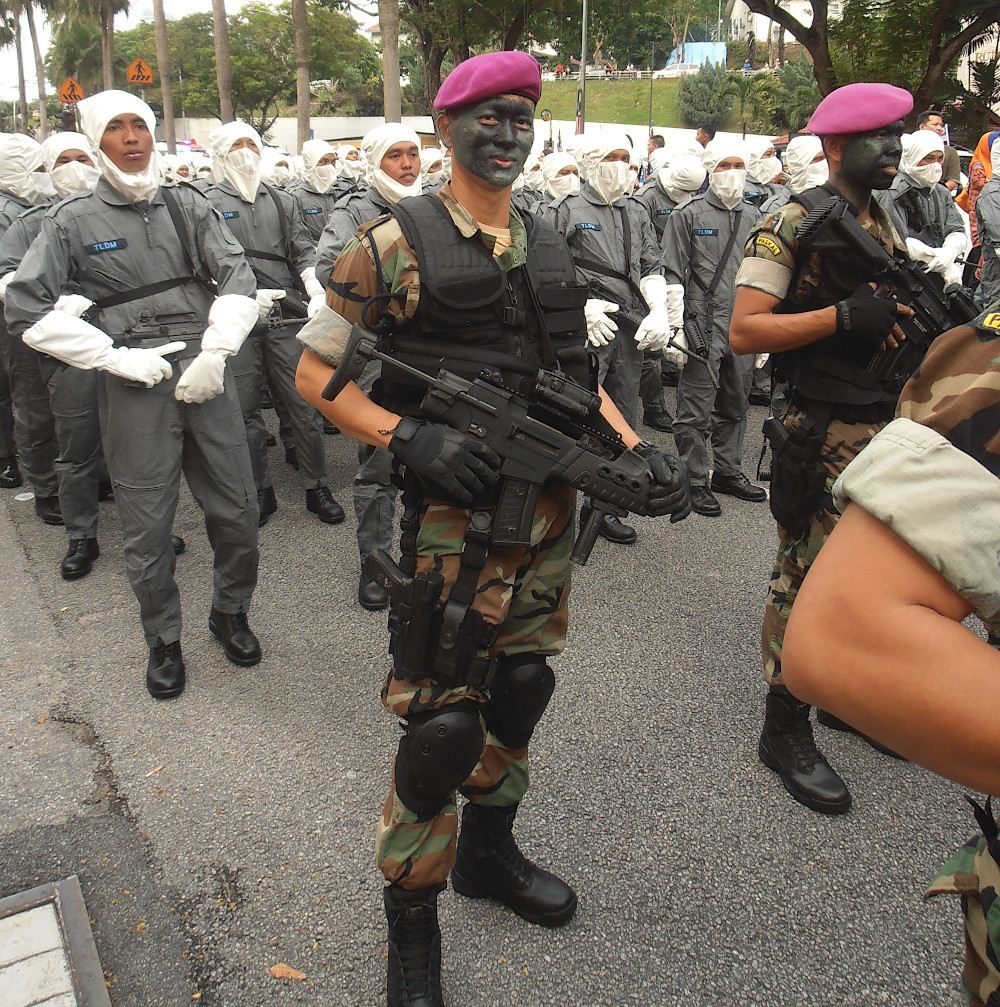
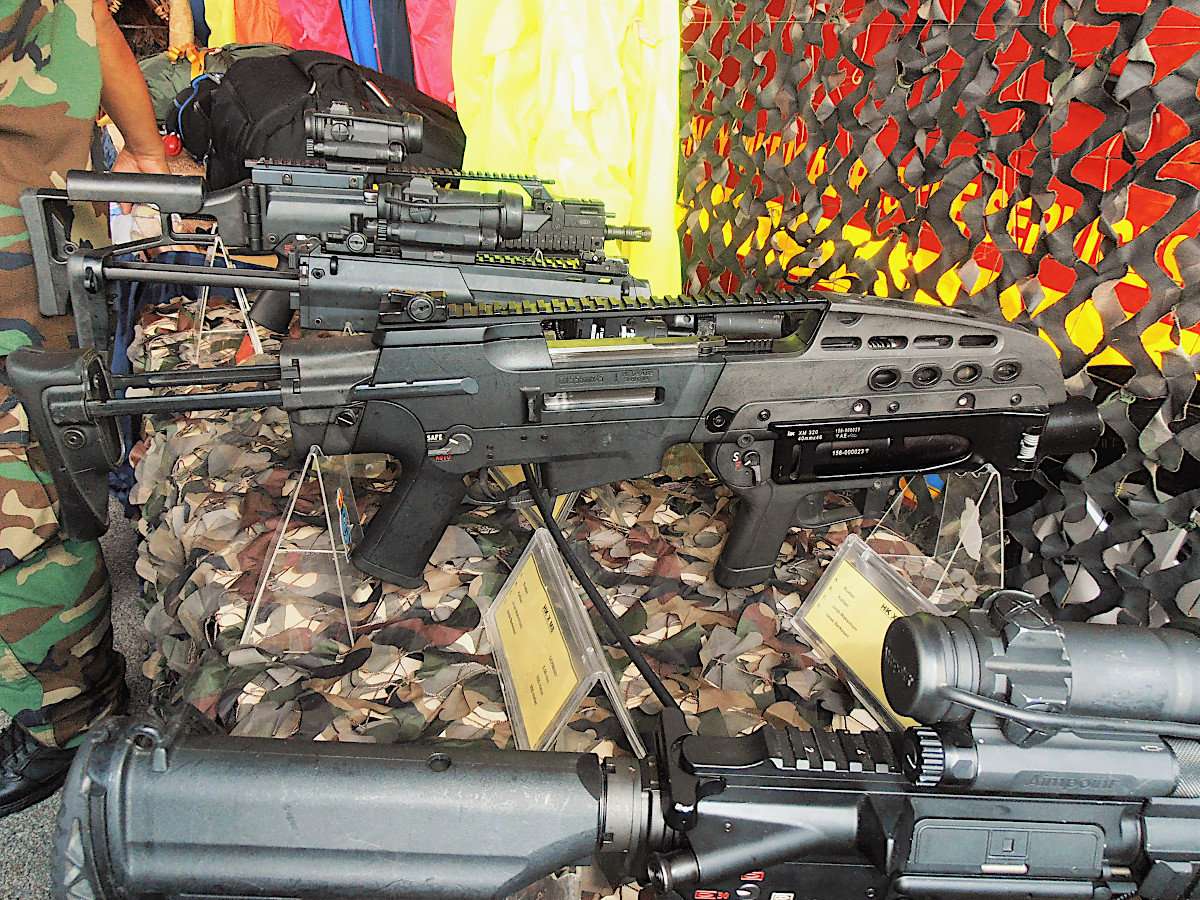
The XM8 itself traces its origins back to the 1990s and a series of over-arching Army plans to field a variety of new and advanced infantry weapons and equipment. This included a program to develop a standard infantry weapon that would combine a compact 5.56mm gun with a 20mm grenade launcher capable of firing programmable ammunition that could be set to airburst above enemy forces hiding behind hard cover.
A Heckler and Koch-led development team ultimately won the contract to build what was formally known as the XM29 Objective Infantry Combat Weapon. Technical issues, particularly work to reduce the overall weight and bulk of the ambitious gun, led the Army to reorganize the program and attempt to develop the two components first as separate weapons in 2004.

The 5.56mm weapon became known as the XM8. The 20mm grenade launcher, which later evolved into a 25mm weapon, became the XM25, also known as the Punisher, which you can read about more in this past War Zone piece.
The very first version of the XM8 was a heavily modified version of the G36C carbine, part of the G36 rifle family that Heckler and Koch had first developed for the German military. The new gun made significant use of polymers in its construction and used a physical gas piston to cycle the operating mechanism. This helps keep unburnt gunpowder and other particulate matter out of the inner workings of the gun, reducing the likelihood of jams or other malfunctions, especially are long periods of use without cleaning. The M16 and M4 series of guns have so-called direct impingement systems that siphon off propellant gas and use that to cycle the action directly.
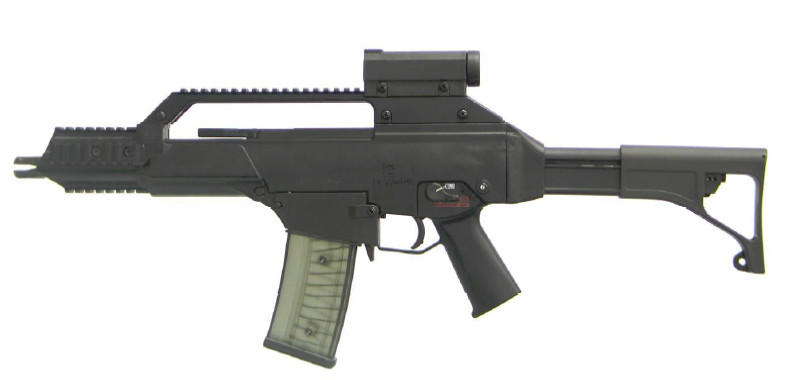
Army Brigadier General James Moran, then head of the service’s Program Executive Office Soldier, complained that the original design looked too much like the German G36 for a weapon that American soldiers would carry, according to the late Jim Schatz, a long-time employee of Heckler and Koch’s U.S. subsidiary. Army officials specifically asked if the gunmaker could make it look “more Starship Troopers,” a reference to the loose 1997 film adaptation of the 1959 Robert Heinlein science fiction novel of the same name, according to firearms researcher Ian McCollum, who runs the website ForgottenWeapons.com.

The futuristic-looking prop guns in that movie were built around modified Ruger AC-556 rifles in a so-called “bullpup” configuration, with the magazine and main action placed behind the pistol grip. The rifle versions also had a modified Ithaca M37 12-gauge shotgun mounted under the barrel.
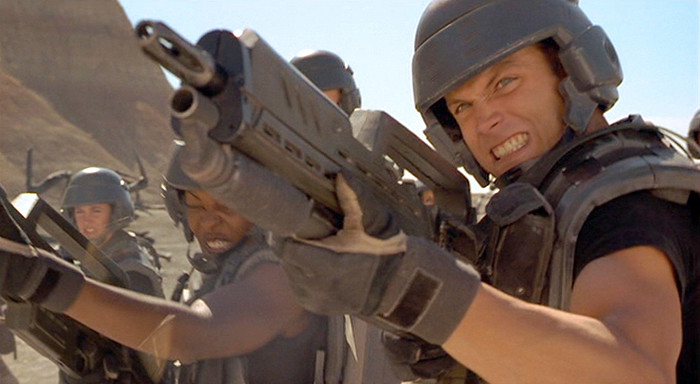
Heckler and Koch did refine the design into a sleeker, futuristic-looking package. The final XM8 prototype design, though formally designated as a carbine, was actually an impressive modular firearms concept that was in many ways ahead of its time. The Army’s Modular Handgun System program, which led to the adoption of variants of the 9mm Sig Sauer P320 pistol, followed a similar philosophy.
The XM8 family had a common receiver design to which armorers could add different length barrels, handguards, buttstocks, and other features. The XM8 had an integrated sighting system, as did the G36 that it was derived from, as well. The gunmaker also eventually added accessory rails, which were not as widespread in the early-to-mid 2000s as they are now, to later iterations of some of the handguard options and the top of the carry handles for the rifle and carbine variants.
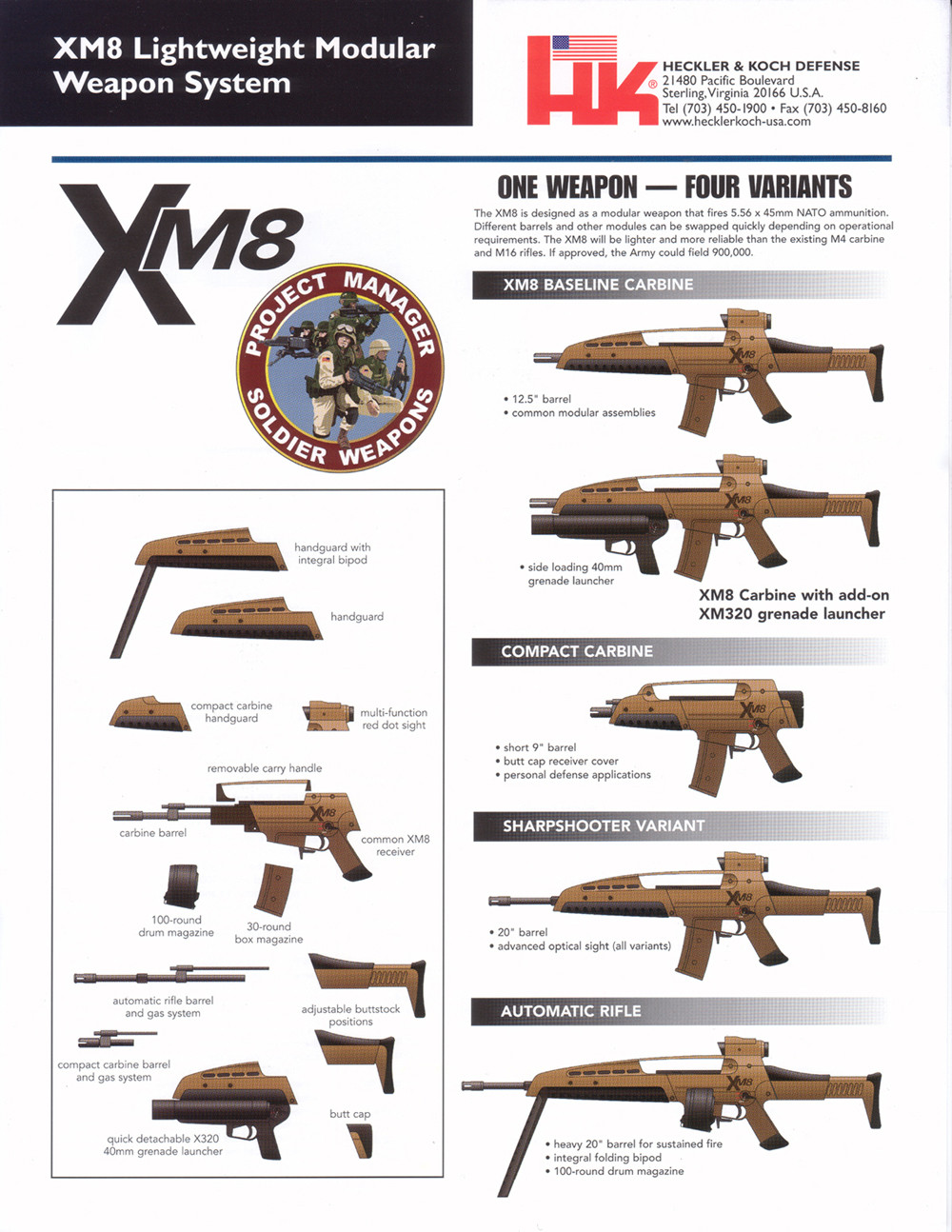
The guns performed relatively well in testing. For a time looked set to become the Army’s next standard infantry weapon and possibly enter service with the other branches of the U.S. military, as well. The XM8, or other guns clearly inspired by it, was a staple of video games in the 2000s and replicas also appeared in the movies Children of Men and District 13: Ultimatum.
However, a combination of Army requirements demands and political factors, including a push by members of Congress to open the XM8 program up to other contenders, including American-headquarter gun manufacturers, together with debates about whether the new gun offered substantial enough improvements to justify the cost of adopting a new standard infantry weapon, ultimately conspired to kill the program in 2005.
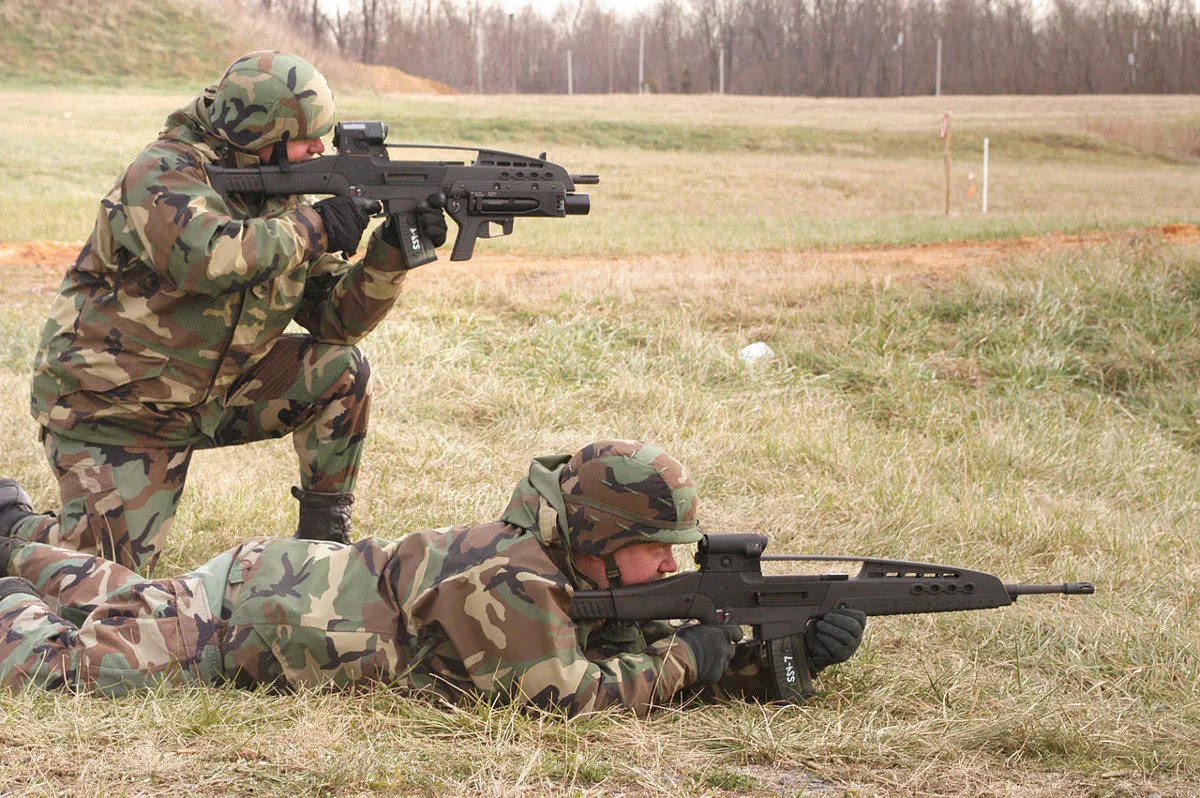
Heckler and Koch offered further refined variants, known as the XM8-Rs, which were more visually similar to the earlier generation of G36-looking guns, to U.S. Special Operations Command for its Special Operations Forces Combat Assault Rifle (SCAR) program. The U.S. Navy, which was overseeing that effort, refused to accept the company’s submission after its proposal package arrived five days after the deadline. The American subsidiary of Belgian gunmaker FN subsequently won that competition.
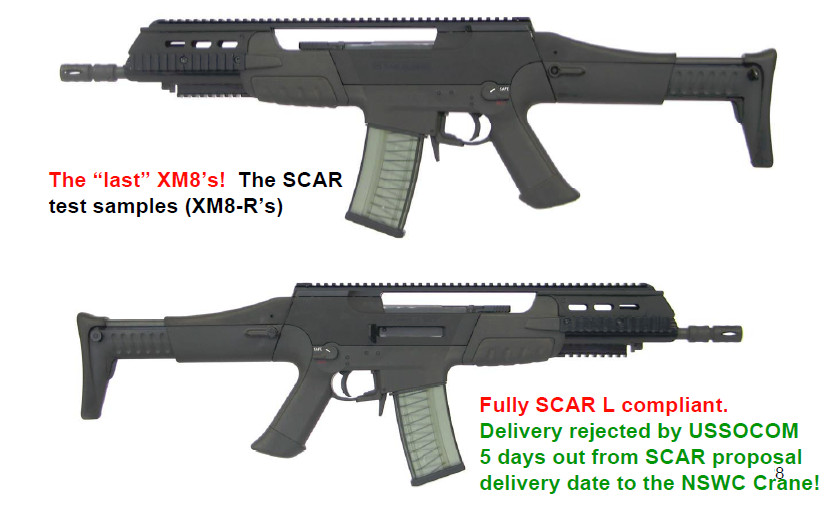
In 2007, the Army bowed to pressure, particularly from some members of Congress, to test the FN SCAR and Heckler and Koch HK 416 rifle, the latter of which is a derivative of the M16 pattern that used a gas piston instead of direct impingement, as potential new service rifles. The service also included some of the XM8s, which it still had in storage, in the tests.
The Army ultimately decided to stick with its existing M4 carbines, though the HK 416 became popular with U.S. special operations forces. The U.S. Marine Corps has also adopted versions in the infantry automatic rifle and designated marksman roles and is now looking to make it their standard infantry rifle. Special operators, as well as regular Army forces, have also now adopted designated marksman variants of the larger HK 417.
With the exception of Malaysia’s PASKAL, no other country has adopted any variant of the XM8. Heckler and Koch has had greater success with its HK 416 and HK 417 product lines than it has with its G36, as well. The company did take lessons learned from all of these guns in developing its latest HK 433.

It’s not clear if PASKAL has ever used its XM8s during actual operations, or how many it might still have in inventory in any configuration, either. Since 2010, it has conducted counter-piracy operations near Somalia and made deployments in support of the NATO-led coalition in Afghanistan. In 2015, the unit also deployed personnel as part of the response to the hijacking of the tanker MT Orkim Harmony in the South China Sea. In that case, the hijackers eventually abandoned the ship without harming any of the crew on board.
The guns are also notably absent from 2018’s PASKAL: The Movie. During the production of that film, some of the actors trained with PASKAL operators, including making a visit to the Lapang Sasar Abdul Samad shooting range at the unit’s home base in the port city of Lumut. This is also notably the location where the video of the individual shooting the XM8 PDW, seen near the top of this story, was shot. That video was uploaded in 2018 and it’s unclear if this was related to the filming of the movie or not.

Whatever the case, PASKAL’s decision to adopt the various variants of the XM8, even on a limited level, is a fascinating epilogue to the story of a gun that once stood looked like it would be the future of U.S. Army infantry small arms.
UPDATE: 4/30/2020:
After the publication of our story, Twitter user @amimJK let us know that the Malaysian Army Forces (MAF), as well as the Royal Malaysia Police (RMP), had trialed variants of the XM8 themselves in 2007. They also shared pictures from a local magazine at the time, showing variants in identical configurations to the ones that PASKAL operators were later seen carrying.
This makes it more likely than not that the naval special operators received these XM8s after those trials concluded and the MAF and the RMP both decided against adopting the guns. It’s still not clear whether or not Heckler and Koch built entirely new weapons for these trials.
Contact the author: joe@thedrive.com
